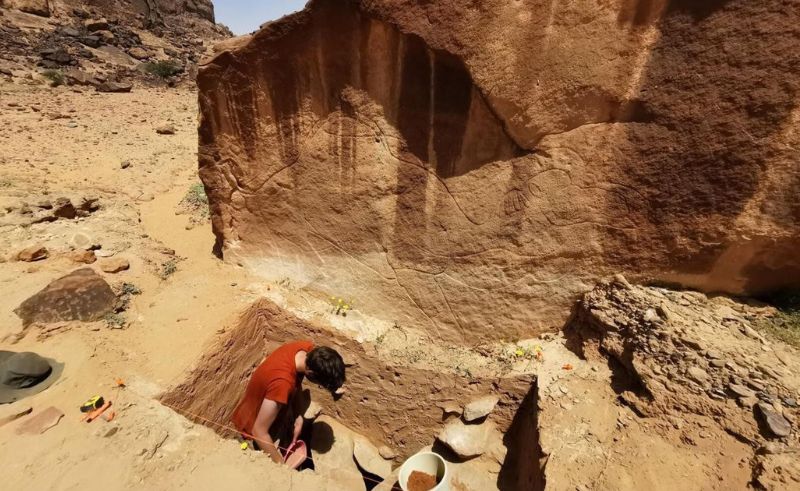Life-Sized Animal Rock Carvings Found in Northern Saudi Arabia
A rock pick beneath the panels was used to date the art and shows people lived in the area about 2,000 years earlier than thought, according to a study published in Nature Communications.

Researchers have discovered life-size rock carvings of camels, gazelles and other animals on cliff faces in northern Saudi Arabia, dated to around 12,000 years ago, with many figures standing over 1.8 metres tall. The engravings may have been made using a wedge-shaped rock to produce sharp lines, and several were etched on narrow ledges that prevented artists from stepping back to view their work.
A rock pick tool was discovered in the sediment directly beneath the carvings, allowing archaeologists to date both the tool and the engravings with greater confidence.
The presence of an auroch carving—an animal not native to desert regions—raises questions about the range and mobility of these ancient communities, or their outsider knowledge of such species.
These findings push back the timeline for human occupation in this region by about 2,000 years compared to earlier estimates.
The study, published in Nature Communications, contributes new insight into early human artistic ability, adaptation to harsh environments, and the complexity of prehistoric societies in the Arabian Peninsula.
Trending This Week
-
Nov 17, 2025



























